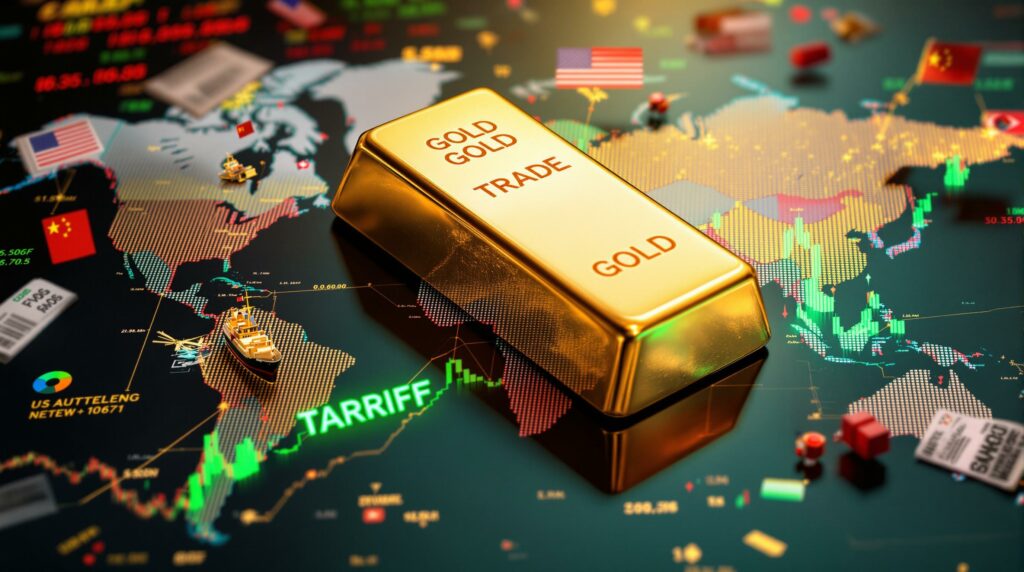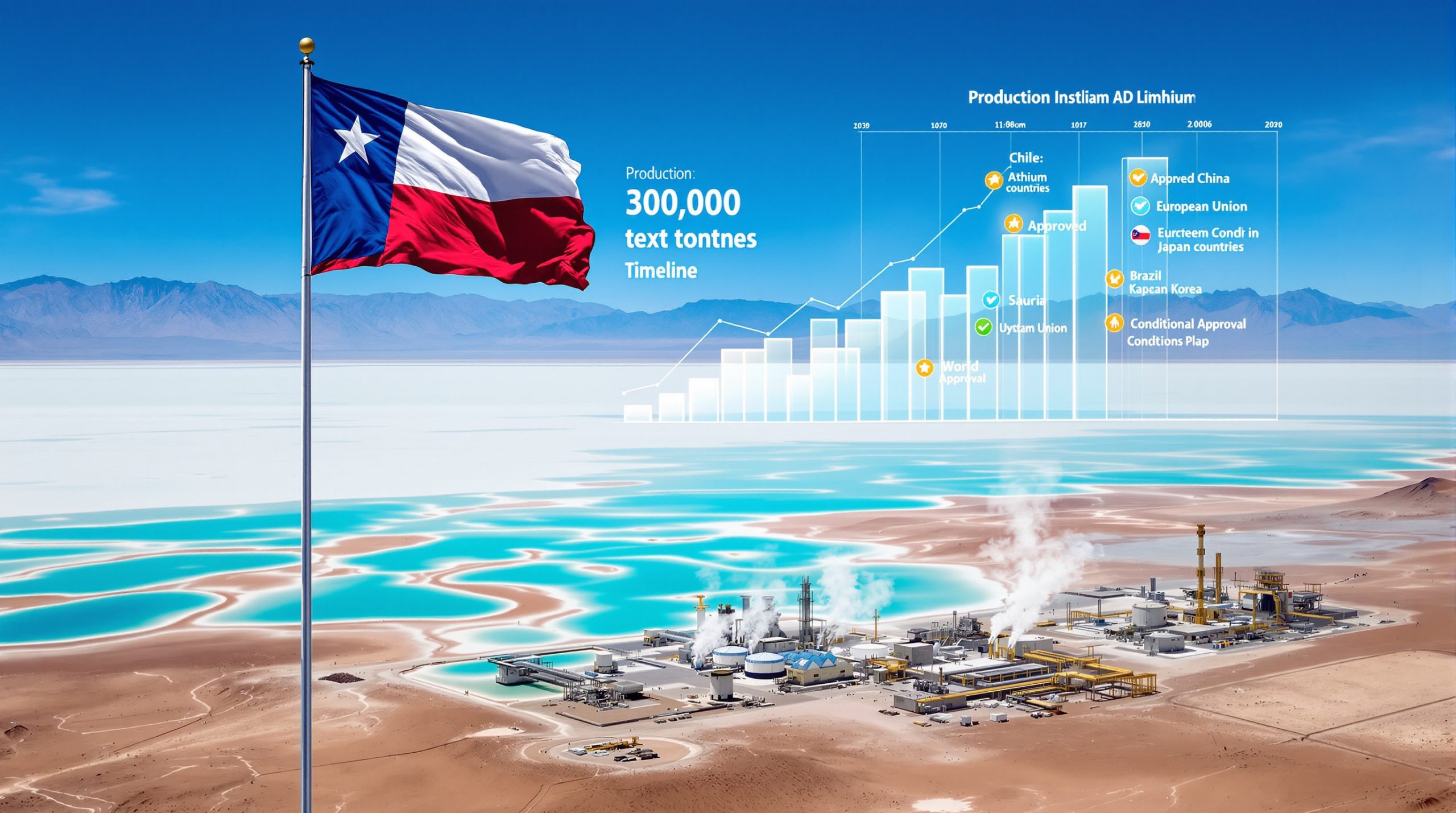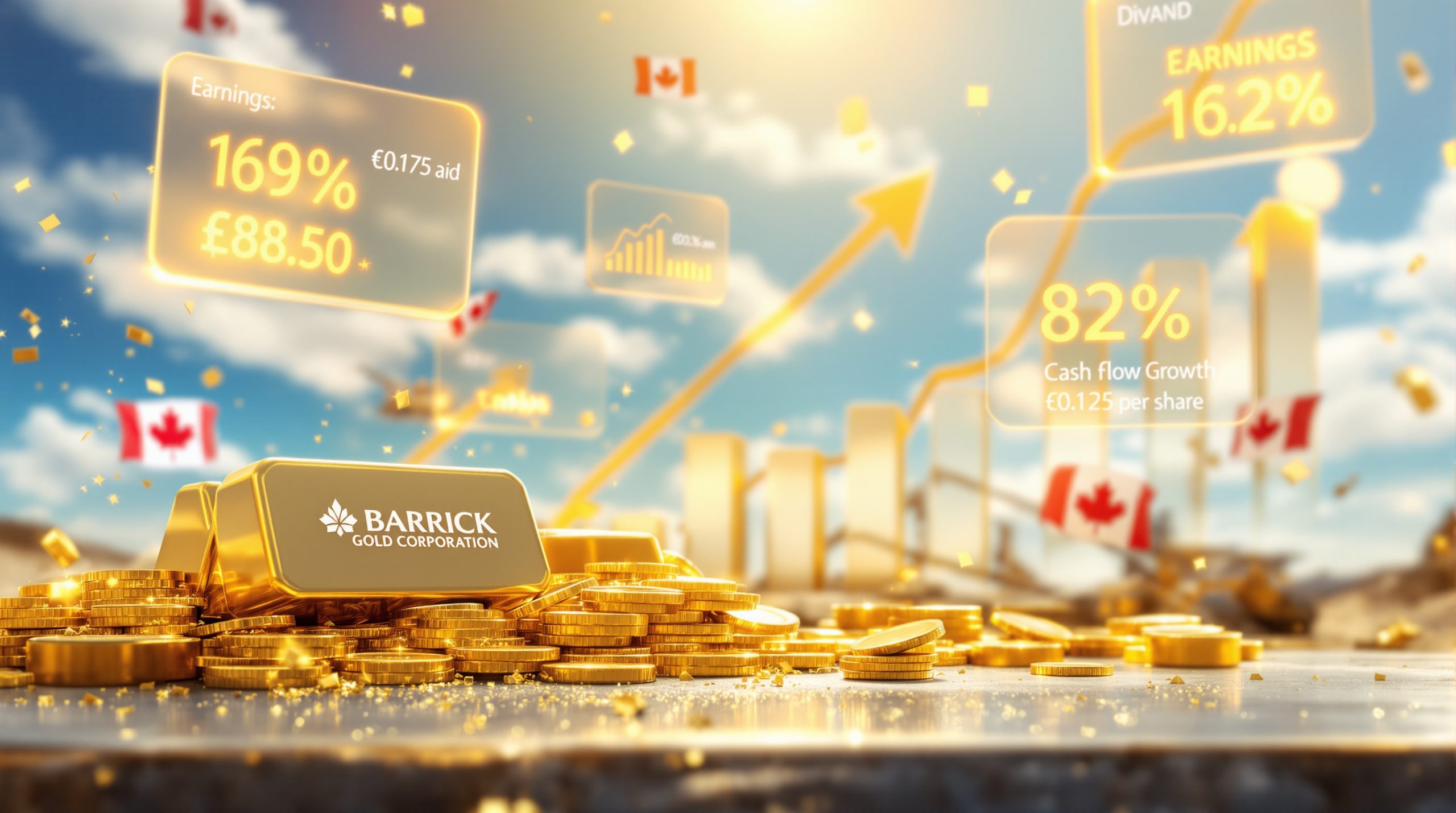What Is the Relationship Between Tariffs and Gold Prices?
Gold prices often move in response to tariff discussions and trade tensions, establishing a clear pattern that investors should understand. When governments announce new tariffs or engage in trade disputes, financial markets typically experience increased volatility and uncertainty. This environment creates the perfect conditions for gold to demonstrate its traditional role as a safe-haven asset.
Recent market activity underscores this relationship, with gold prices retreating from record gold highs analysis following renewed tariff discussions. According to the CNBC Squawk Box segment titled "Tariff talks send gold lower," this pattern illustrates how quickly gold markets can respond to shifts in trade policy rhetoric.
The connection works through several mechanisms. First, tariffs create economic uncertainty, driving investors toward perceived safety. Second, trade tensions often weaken currencies involved in the dispute, making gold more attractive as an alternative store of value. Third, the resulting economic slowdown may prompt central banks to adopt more accommodative monetary policies, which typically support gold prices.
The Fundamental Connection Between Trade Policy and Precious Metals
Trade tensions create ripple effects throughout global markets, often triggering a flight to safety among investors. Gold, with its millennia-long history as a store of value, frequently benefits from this dynamic. However, the relationship isn't always straightforward.
When tariff discussions intensify, the U.S. dollar sometimes strengthens as investors seek refuge in the world's reserve currency. This dollar strength can temporarily pressure gold prices, as the metal is primarily priced in dollars on international markets. This creates what market analysts call the "tariff paradox" for gold investors—initial pressure followed by longer-term support as economic consequences unfold.
"Trade policy uncertainty creates a complex environment for gold," notes Martin Huxley, global head of precious metals at INTL FCStone. "While immediate reactions can be counterintuitive, history shows that prolonged trade tensions ultimately benefit precious metals as economic growth concerns mount."
The complexity of this relationship means investors must look beyond immediate price movements to understand the full impact of tariff impact on markets and gold prices.
Historical Patterns of Gold Performance During Trade Disputes
Examining past trade conflicts provides valuable insights into gold's behavior during such periods. The 2018-2019 U.S.-China trade war offers a particularly relevant case study. As tensions escalated between the world's two largest economies, gold demonstrated significant strength, with prices climbing approximately 18% during the most intense phase of the dispute.
Gold's performance during this period wasn't merely coincidental. Economic data revealed slowing growth in both countries directly affected by the tariffs, which prompted central banks to adopt more accommodative monetary policies. The Federal Reserve shifted from a tightening bias to implementing three rate cuts, creating an environment that supported gold prices.
This pattern of gold outperformance during trade tensions extends beyond the U.S.-China dispute. Analysis of major trade conflicts over the past three decades shows gold averaging 12-15% gains during periods of significant trade policy uncertainty, compared to more modest returns during stable trade periods.
Market volatility indicators typically increase 25-30% during active tariff negotiation periods, creating precisely the type of unstable environment where gold traditionally shines. Interestingly, gold price forecast movements often precede actual tariff implementation by several weeks, suggesting the metal serves as a leading indicator of economic sentiment during trade disputes.
How Are Current Tariff Discussions Impacting Gold Prices?
Today's gold market reflects the complex interplay between tariff talks and precious metals pricing. After reaching all-time highs, gold has experienced a notable pullback coinciding with renewed discussions about potential tariff implementations. This correction demonstrates how sensitive gold can be to changes in trade policy rhetoric.
The recent retreat in gold prices follows a familiar pattern where initial tariff discussions create short-term market uncertainty. This uncertainty often triggers portfolio adjustments among institutional investors, with some reducing gold positions temporarily while assessing the potential economic impact of proposed tariffs.
Trading volumes have increased significantly during this correction phase, indicating heightened market activity and investor reassessment. Technical analysts note that despite the pullback, gold has found support at key price levels, suggesting the metal's underlying strength remains intact despite short-term volatility.
Recent Market Movements and Price Corrections
The gold market's reaction to current tariff discussions follows a recognizable pattern. After achieving record highs above $2,400 per ounce, gold experienced a correction as traders processed the implications of potential new trade barriers. This pullback represents a classic market response to policy uncertainty rather than a fundamental shift in gold's outlook.
Professional traders have noted increased institutional activity during this correction phase. According to the most recent Commitment of Traders reports, large speculators have adjusted their positions, suggesting a tactical repositioning rather than a strategic shift away from precious metals.
"What we're seeing is a recalibration of positions rather than a fundamental change in sentiment toward gold," explains Peter Grosskopf, CEO of Sprott Inc. "The smart money understands that tariff talk creates short-term volatility but potentially strengthens gold's long-term case."
Technical analysis reveals gold finding support at key moving averages despite the pullback, with particular attention to the 50-day moving average that has served as reliable support during previous corrections. This technical resilience suggests the current pullback may represent a buying opportunity rather than the start of a sustained downtrend, according to recent reports from Reuters.
Macroeconomic Factors Amplifying Tariff Effects
The impact of tariff discussions on gold prices doesn't occur in isolation but interacts with broader macroeconomic conditions. Interest rate expectations play a crucial role in determining how strongly tariff talks affect gold markets. When central banks signal potential rate cuts in response to trade-related economic slowdowns, gold typically finds additional support.
The dollar strength index has shown notable increases during recent tariff discussions, creating additional headwinds for gold in the short term. This inverse relationship between dollar strength and gold prices explains much of the recent correction in the precious metal.
Inflation expectations shift during trade disputes, often rising as markets anticipate higher consumer prices resulting from tariffs economic implications. These changing inflation expectations affect real interest rates—nominal rates minus inflation—which strongly correlate with gold prices. When real rates decline due to higher inflation expectations, gold usually benefits.
Global manufacturing data reveals the concrete economic impact of tariff threats, with purchasing managers' indices (PMIs) showing contraction in countries most affected by potential new tariffs. This manufacturing weakness often precedes central bank intervention, creating a supportive environment for gold in the medium term.
Why Do Investors Turn to Gold During Trade Uncertainty?
During periods of trade tension and tariff implementation, investors consistently increase their allocation to gold. This behavior reflects gold's unique properties as an asset that carries no counterparty risk and remains outside the direct control of any single government or central bank. Unlike currencies or government bonds, gold cannot be devalued through policy decisions, making it particularly attractive during periods of geopolitical uncertainty.
Gold's appeal during trade disputes extends beyond traditional investors to include central banks, which have accelerated their purchases in recent years amid increasing global trade tensions. This institutional buying provides additional support for gold prices during periods of trade uncertainty.
The psychological aspects of investor behavior also play a crucial role in gold's performance during trade disputes. Fear indices typically show significant increases during tariff negotiations, reflecting heightened market anxiety that often translates into greater demand for gold as a perceived safe haven.
Gold as a Safe-Haven Asset During Policy Shifts
Gold's status as a safe-haven asset becomes particularly valuable during trade policy shifts for several compelling reasons. First, gold maintains no counterparty risk, unlike currencies that can be directly affected by trade policy decisions. This independence from government control provides investors with a sense of security during uncertain times.
Physical gold demand typically increases during periods of significant trade tensions as both institutional and retail investors seek tangible assets. This increased demand often supports prices even when paper gold markets experience short-term volatility.
Central banks have accelerated gold purchases in recent quarters amid global trade uncertainty, recognizing the metal's role as a strategic reserve asset during periods of geopolitical tension. This official sector buying provides an important foundation of support for gold prices during trade disputes.
Portfolio allocation models from major investment banks typically recommend increasing gold exposure during trade disputes. These models recognize gold's historical tendency to provide diversification benefits precisely when they're most needed—during periods of elevated market stress and uncertainty.
Psychological Factors Driving Investor Behavior
Market psychology plays a crucial role in gold's performance during tariff discussions. Fear indices, which measure market expectations of near-term volatility, typically show substantial increases during active tariff negotiation periods. This rising fear often translates directly into increased interest in gold as a perceived safe harbor.
Retail investor participation in gold markets rises notably during trade tensions, with Google search trends for terms like "buy gold" showing clear spikes during periods of heightened trade rhetoric. This increased interest from smaller investors often follows institutional positioning by several weeks, creating a sequential pattern of demand.
Market sentiment analysis reveals clear correlations between negative trade headlines and gold purchasing activity. Studies of financial media coverage show that as trade-related headlines turn more negative, gold typically experiences price support within a short timeframe.
Historical data demonstrates that gold has consistently outperformed traditional equity markets during prolonged trade disputes. This outperformance reinforces the psychological perception of gold as a reliable store of value during periods of policy uncertainty, creating a self-reinforcing cycle of investor interest.
How Does Gold Compare to Other Assets During Tariff Tensions?
When tariff tensions rise, investors naturally seek to understand which assets might provide protection. Gold's performance during such periods must be compared with alternatives to develop comprehensive gold investment strategies. The data reveals gold typically offers a distinct risk-return profile during trade disputes compared to other potential safe havens.
Cryptocurrencies, often positioned as "digital gold," demonstrate significantly higher volatility than physical gold during trade tensions. While both assets may benefit from safe-haven flows, gold's established status and central bank participation create a more stable price trajectory.
Other commodities show varied responses to tariff discussions. Industrial metals often suffer due to anticipated manufacturing slowdowns, while agricultural commodities directly targeted by tariffs experience extreme price volatility. Gold's lack of industrial dependence insulates it from these direct effects, contributing to its relative stability during trade disputes.
Gold vs. Cryptocurrencies as Hedges Against Trade Uncertainty
The comparison between gold and cryptocurrencies during trade disputes reveals important differences for investors. Gold has demonstrated significantly lower volatility than major cryptocurrencies during periods of trade tension, making it a more reliable store of value for risk-averse investors seeking stability.
Correlation analysis shows gold maintaining a negative correlation with equity markets during tariff talks, enhancing its portfolio diversification benefits. In contrast, cryptocurrencies have shown less consistent correlation patterns, sometimes moving in tandem with risk assets during market stress rather than providing reliable diversification.
Institutional allocation decisions during trade uncertainty heavily favor gold over cryptocurrencies, reflecting both regulatory comfort and historical performance. While crypto adoption continues to grow, traditional financial institutions still overwhelmingly choose gold for their safe-haven allocations during periods of trade tension.
"The key difference is market depth and liquidity," explains Jan van Eck, CEO of VanEck. "During true market stress, gold's deep, liquid market allows for efficient position adjustments without the extreme price impact we sometimes see in crypto markets."
Performance Comparison With Other Commodities
Gold's performance during tariff implementation periods typically outpaces industrial metals, which often suffer from anticipated manufacturing slowdowns. Copper, aluminum, and other industrial metals face direct demand concerns when tariffs threaten to slow global growth, while gold benefits from its monetary rather than industrial status.
Silver presents an interesting middle case, typically following gold's pattern but with greater volatility during trade disputes. Silver's dual nature as both a precious and industrial metal creates this amplified response, making it both more vulnerable to economic slowdown fears and more responsive to safe-haven buying.
Agricultural commodities directly targeted by tariffs show extreme price volatility compared to gold. During the 2018-2019 trade tensions, soybeans and other targeted agricultural products experienced price swings 25-30% greater than gold, highlighting the relative stability of precious metals during such periods.
Energy commodities demonstrate heightened sensitivity to tariff announcements compared to gold, reflecting concerns about global growth and demand destruction. Oil prices typically show more than twice the volatility of gold during significant trade disputes, making precious metals a comparatively stable option during such periods.
What Should Investors Watch for in the Current Environment?
For investors navigating the complex relationship between tariff talks and gold prices, several key indicators deserve special attention. These signals can help anticipate gold's next major move and inform tactical portfolio adjustments during periods of trade uncertainty.
Real interest rates remain one of the most reliable predictors of gold price movements, with negative or declining real rates typically supporting higher gold prices. When tariff concerns lead to economic growth revisions and subsequent interest rate adjustments, the resulting impact on real rates often drives gold's next major move.
Dollar strength represents another critical indicator, as gold and the dollar typically maintain an inverse relationship. When tariff discussions affect currency markets, the resulting dollar movements often telegraph gold's short-term direction.
Central bank purchasing activity provides insight into institutional thinking about long-term economic stability. Accelerated central bank gold buying during trade disputes often precedes significant price movements, making official sector activity worth monitoring closely.
Key Indicators That Signal Gold's Next Move
Real interest rate trends deserve close attention, as gold typically rises when real rates (nominal rates minus inflation) fall below key thresholds. During previous trade disputes, gold has shown particular strength when real 10-year Treasury yields drop below 0.5%, creating a favorable environment for non-yielding assets.
The dollar strength index provides crucial context for gold price movements, with a 1% change in the dollar typically correlating with an opposite move in gold prices. Monitoring currency markets for reactions to tariff discussions can provide early signals about potential gold price movements.
Central bank purchasing activity offers valuable insights into institutional thinking about global economic stability. Increased buying by monetary authorities often precedes significant gold price movements, making official sector activity an important leading indicator during trade disputes.
ETF flow data reveals institutional positioning that frequently leads retail sentiment by several weeks. During the 2018-2019 trade tensions, gold ETF inflows accelerated significantly before the most substantial price gains, highlighting the importance of monitoring these investment vehicles for early signals of changing market sentiment.
Strategic Considerations for Portfolio Management
Diversification metrics suggest optimal gold allocation typically increases during trade tensions, with portfolio models indicating a shift from standard 5% allocations to 8-10% positions during periods of heightened trade uncertainty. This increased allocation reflects gold's enhanced diversification benefits when correlations between traditional assets strengthen during market stress.
Tactical positioning should consider historical timelines of tariff negotiations, which typically unfold over 60-90 day periods. This timeframe allows investors to implement strategic positions with appropriate horizons, rather than reacting to daily headline volatility.
Risk management strategies often require adjustment during tariff discussions, with experienced traders implementing wider stop-loss parameters to accommodate increased market volatility. This approach prevents premature liquidation during short-term fluctuations while maintaining protection against sustained adverse moves.
The correlation benefits between gold and traditional equities improve substantially during periods of trade uncertainty, enhancing gold's portfolio utility precisely when diversification is most valuable. This improving correlation profile makes gold particularly attractive during periods when other traditional diversifiers may underperform.
How Might Future Tariff Policies Affect Gold Markets?
Looking ahead, various tariff policy scenarios could create distinctly different environments for gold investors. Understanding these potential outcomes helps prepare portfolios for a range of possible futures rather than betting on a single outcome.
Comprehensive scenario analysis suggests broad-based tariff implementation would likely trigger significant gold price increases as global growth concerns mount and central banks respond with accommodative policies. The resulting environment of lower real interest rates and increased economic uncertainty typically benefits precious metals.
More targeted tariff approaches historically produce more moderate gold price movements, as contained economic impacts limit both safe-haven demand and monetary policy responses. These scenarios often create trading ranges rather than sustained trends in gold prices.
Resolution scenarios typically lead to initial gold price corrections as immediate safe-haven demand recedes. However, the lasting economic effects of even temporary tariff implementations often support gold prices well after headlines fade, as supply chains and investment patterns adjust to the new reality.
Potential Scenarios and Price Projections
Scenario analysis suggests a 10-15% gold price increase would be likely if broad-based tariffs affecting multiple economic sectors were implemented. This projection reflects historical patterns from previous comprehensive trade disputes, where gold benefited from both safe-haven flows and monetary policy responses.
Targeted tariff approaches focused on specific industries historically result in more moderate 5-7% gold price movements. These contained price reactions reflect the limited economic impact of sector-specific measures compared to economy-wide trade barriers.
Resolution scenarios typically lead to initial 3-4% corrections in gold prices as immediate safe-haven demand recedes. However, market analysis shows these corrections are often temporary, with prices stabilizing as investors recognize the lasting economic effects of even resolved trade disputes.
"What many investors miss is that even temporary tariffs create lasting economic effects," notes Jeffrey Christian, Managing Director at CPM Group. "Supply chains don't simply snap back to their original configuration once tariffs are removed—the adjustments continue to influence markets for many quarters."
Long-Term Structural Impacts on Gold Markets
Supply chain restructuring due to tariffs creates extended adjustment periods favorable to gold, as businesses require 12-18 months to adapt to new trade realities. During these transition periods, economic uncertainty typically remains elevated, supporting precious metals prices even after headline tariff news fades.
Manufacturing relocation decisions triggered by tariff policies increase economic uncertainty, supporting gold for multiple quarters as production facilities shift between countries and regions. This extended perio
Ready to Stay Ahead of Market-Moving Mineral Discoveries?
Discover how the proprietary Discovery IQ model from Discovery Alert provides real-time notifications of significant ASX mineral discoveries, giving you the market edge before prices move. Visit the discoveries page to see how major mineral finds can generate exceptional returns for early investors.




